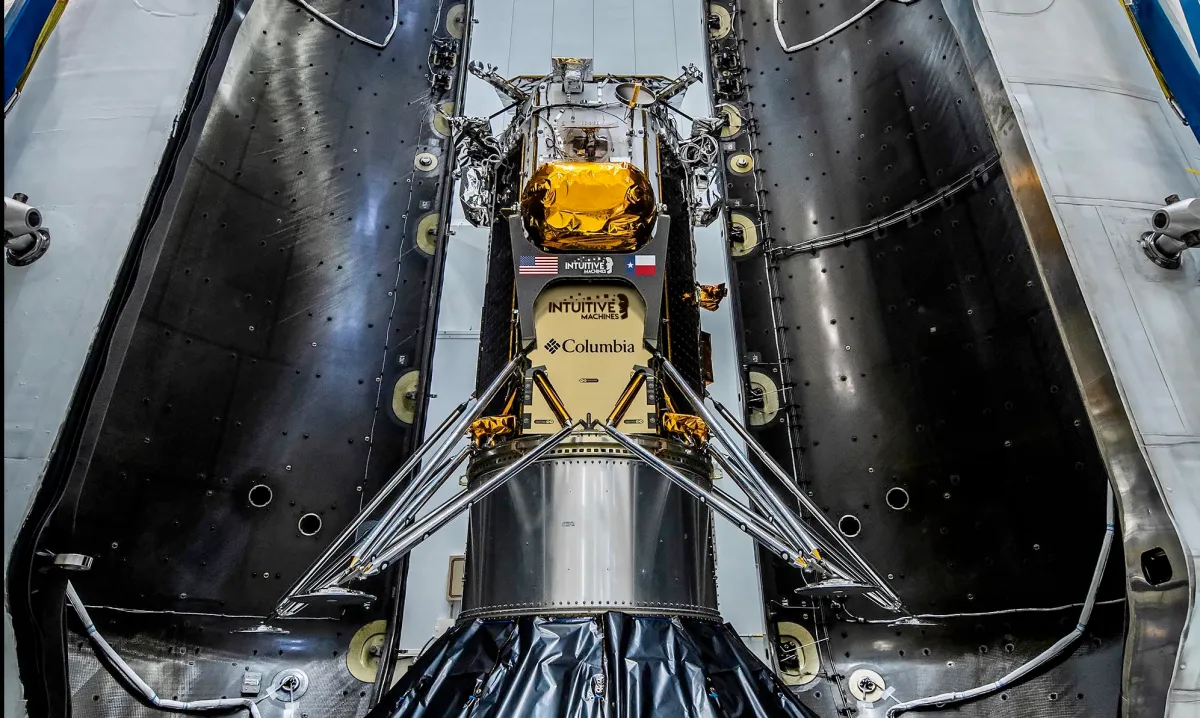Intuitive Machines and SpaceX have confirmed the launch date of the IM-1 mission. It will go to the Moon on February 14th — Valentine’s Day.
Odysseus technical design
The IM-1 mission is funded by NASA under the CLPS program. Its goal is to land the Odysseus probe (Nova-C) on the Moon. The weight of the spacecraft is 675 kg. There are twelve cargoes on board. Six are owned by NASA. Among them are a laser reflector, a stereo camera for studying dust plumes that will be lifted by the landing platform engines, radio science instrument, lidar, as well as a device for a navigation experiment.

The rest of the cargo was provided by various private customers — from Embry-Riddle Aviation University to the artist Jeff Koons. The most interesting of them is the EagleCAM selfie camera, which will be dropped by Nova-C before landing and should capture the landing of the spacecraft.
As a passing cargo, along with Odysseus, the Doge-1 CubeSat, which launch was paid for with Dogecoin cryptocurrency, will also go to the Moon. It will broadcast advertisements, logos and various images to Earth, which will be displayed on the external screen of the spacecraft while in lunar orbit.
Odysseus flight schedule
A Falcon 9 rocket will be used to launch Odysseus. In the coming days, SpaceX specialists will conduct a refueling test of the carrier, after which the probe will be installed under its head fairing.
The ballistic window for the flight to the Moon will be open for three days starting on February 14. The flight should take 9 days. The mission’s landing site will be the 24-kilometer Malapert A crater, located about 300 km from the moon’s South Pole
If successful, Intuitive Machines will be the first private company to deliver cargo to the moon. Before it, the Israeli non-profit organization SpaceIL (Beresheet), the Japanese company ispace (Hakuto-R) and the American Astrobotic (Peregrine) tried to do this. But for various reasons, they all failed.
According to https://spacenews.com
Follow us on Twitter to get the most interesting space news in time
https://twitter.com/ust_magazine


